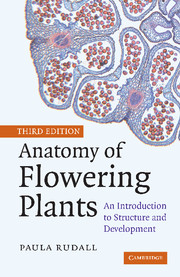Taxonomic overview
Published online by Cambridge University Press: 02 December 2010
Summary
In textbooks published before 1990, extant angiosperms were consistently subdivided into two major groups – dicotyledons (dicots) and monocotyledons (monocots), based partly on the number of cotyledons in the seedling. This dichotomy was long considered to represent a fundamental divergence at the base of the angiosperm evolutionary tree. Other features marked this distinction, including the absence of a vascular cambium and presence of parallel leaf venation in monocots. However, the expansion of molecular phylogenetics through the early 1990s indicated that some species that were formerly classified as primitive dicots do not belong to either category, though the monophyly of monocots was confirmed. Thus, although the dicot/monocot distinction remains useful for generalized descriptions of angiosperm groups, current evidence suggests that it does not represent a wholly natural classification. It is now widely accepted that several relatively species-poor angiosperm lineages (here termed early-divergent angiosperms or magnoliids) evolved before the divergence of the two major lineages that led to the monocots and the remaining dicots (now termed eudicots, or sometimes tricolpates).
Early-divergent angiosperms (including magnoliids) are a small but highly diverse assemblage of taxonomically isolated lineages that probably represent the surviving extant members of their respective clades, accounting for only about 1% of extant species.
- Type
- Chapter
- Information
- Anatomy of Flowering PlantsAn Introduction to Structure and Development, pp. xi - xiiPublisher: Cambridge University PressPrint publication year: 2007



